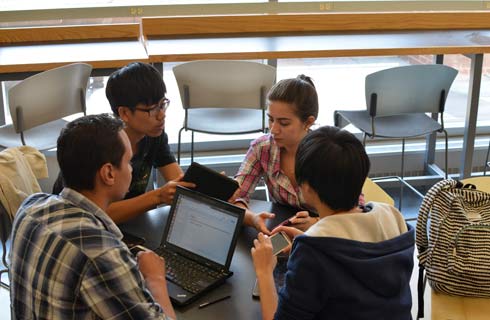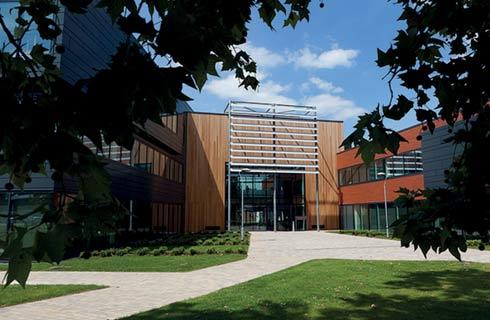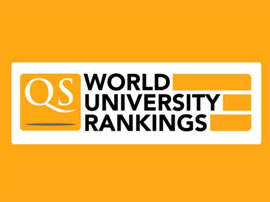教育学学士-幼儿教育
Bachelor of Science in Education - Early Childhood Education

学历文凭
Bachelor Degree

专业院系
Department of Curriculum and Instruction

开学时间

课程时长

课程学费

国际学生入学条件
IDP—雅思考试联合主办方

雅思考试总分
6.0
- 雅思总分:6
- 托福网考总分:68
- 托福笔试总分:520
- 其他语言考试:Duolingo - score of 95.
CRICOS代码:
申请截止日期: 请与IDP联系 以获取详细信息。
课程简介
This basic course in the growth, development, and learning of young children, prenatal through age eight, provides students with the theoretical foundation for becoming competent early childhood professionals. The course includes knowledge of how young children grow, develop and learn. Major theories of child development are integrated with all domains of development, including biological-physical, social, cultural, emotional, cognitive and language. The adult's role in supporting each child's growth, development and learning is emphasized. May be repeated up to 3 credits.<br><br>Incorporate understanding of developmental stages, processes, and theories of growth, development, and learning into developmentally appropriate practice. A.one Demonstrate knowledge of the interaction between maturation and environmental factors that influence physical, social, emotional, cognitive, and cultural domains in the healthy development of each child. A.two Demonstrate knowledge of the significance of individual differences in development and learning. Demonstrate knowledge of how certain differences may be associated with rate of development and developmental patterns associated with developmental delays and/or specific disabilities. A.three Demonstrate knowledge of the similarities between children who are developing typically and those with diverse abilities. A.four Demonstrate knowledge of the many functions that language serves in the cognitive, social, and emotional aspects of development in the formative years. A.seven Demonstrate knowledge of the developmental sequence of language and literacy, including the influence of culture and home factors. A.eight Demonstrate knowledge of how children acquire and use verbal, non-verbal, and alternative means of communication. A.nine Demonstrate knowledge of the relationship among emotions, behaviors, and communication skills to assist children in identifying and expressing their feelings in appropriate ways. A.ten 1 Use appropriate guidance to support the development of self-regulatory capacities in young children. A.eleven
相关申请
 预科
预科 奖学金
奖学金 实习机会
实习机会 在校学习
在校学习 跨境学习
跨境学习 校园授课-线上开始
校园授课-线上开始 在线/远程学习
在线/远程学习
开学时间&学费
学费信息仅供参考,请与IDP联系以获取详细信息
| 开学时间 | 时长 | 学费 | 地点 |
|---|
学校排名

世界排名601
数据源:
泰晤士高等教育世界大学排名
关于新墨西哥州立大学

新墨西哥州立大学是一所历史悠久的公立大学,成立于1888年,主校区位于新墨西哥州的拉斯库鲁斯(New Mexico, Las Cruces),是“大陆法案大学”( land-grant university)之一。最早创立时候名为拉斯库鲁斯学院(Las Cruces College), 是一所农业学院。1889年更名为“New Mexico College of Agriculture and Mechanic Arts”。总计有2.64万学生(2005年数据), 师生比是1:19。NMSU所设的学科,包括农科、生物科学、商科管理,大众传播及艺术、计算机及自然科学,教育、工程及环境设计、健康专业、社会科学等。
本校相关课程

机械工程哲学博士
学历文凭
Ph.D.
开学日期
课程费用总额


机械工程理学硕士
学历文凭
Masters Degree
开学日期
课程费用总额


Doctor of Philosophy in Electrical Engineering
学历文凭
Ph.D.
开学日期
课程费用总额


Master of Science in Electrical Engineering
学历文凭
Masters Degree
开学日期
课程费用总额


土木工程理学硕士
学历文凭
Masters Degree
开学日期
课程费用总额


化学工程博士学位
学历文凭
Ph.D.
开学日期
课程费用总额

其他相关课程

教育学学士
 圣弗朗西斯泽维尔大学
圣弗朗西斯泽维尔大学学历文凭
Bachelor Degree
开学日期
课程费用总额


教育学理学学士-教师教育流(荣誉)
 特伦特大学
特伦特大学学历文凭
Bachelor Degree
开学日期
课程费用总额


教育学学士学位-教师教育流(荣誉)
 特伦特大学
特伦特大学学历文凭
Bachelor Degree with Honours
开学日期
课程费用总额


教育学学士
 爱德华王子岛大学
爱德华王子岛大学学历文凭
Bachelor Degree
开学日期
课程费用总额


幼儿研究文学硕士
 多伦多都会大学
多伦多都会大学学历文凭
Masters Degree
开学日期
课程费用总额


职前消防员教育培训证书
 凯布莱恩学院
凯布莱恩学院学历文凭
Bachelor Degree
开学日期
课程费用总额










 美国
美国